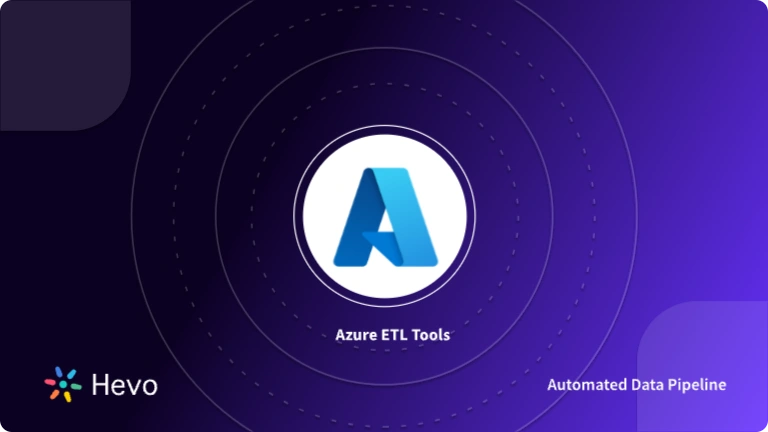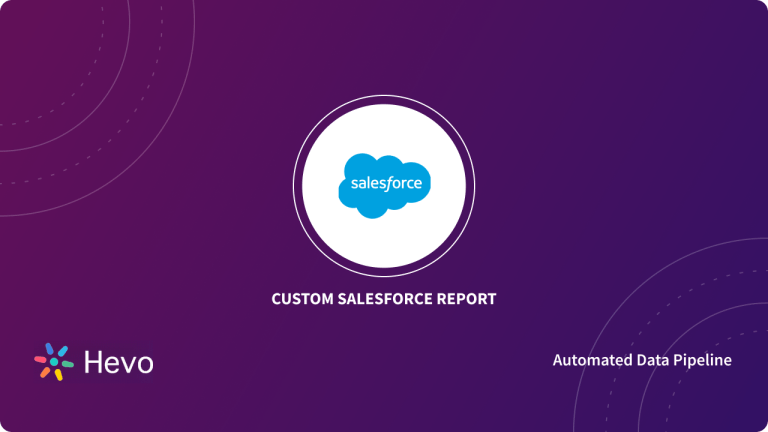Integrating your CRM (Customer Relationship Management) tools has become a must in the modern workplace. CRM solutions, such as Salesforce, provide a vast network of applications that are often utilized in isolation. However, these tools are most effective when they are used in close conjunction. Integrating Salesforce Azure can assist you in better understanding your customers and in making strategic decisions.
Salesforce is a Customer Relationship Management (CRM) software that allows companies to connect with their customers, partners, and other organizations. It helps companies to track customers, derive insights from their data, and manage customer support and complaints. Moreover, users can use Salesforce to keep track of contacts, generate reports, run businesses, and engage on social media. Microsoft Azure is a Cloud Computing platform that is open, flexible, and enterprise-ready. It allows you to create, manage, and deploy applications across a large, worldwide network using the tools and frameworks of your choice.
This article will guide you through the process of setting up Salesforce Azure Integration using 3 simple steps. It will provide you with a brief overview of Salesforce and Microsoft Azure with their key features. You will also explore the benefits of setting up Salesforce Azure Integration in further sections. Let’s get started.
Table of Contents
Prerequisites
You will have a much easier time setting up your Salesforce Azure Integration if you have gone through the following prerequisites.
- An active Salesforce account.
- An active Microsoft Azure subscription.
- Working knowledge of CRM tools and Cloud Computing services.
Introduction to Salesforce
Salesforce is a Cloud-Based Customer Relationship Management (CRM) application that assists businesses in managing sales and customer data. Salesforce CRM is simple to set up and operate; therefore, you don’t need any technical knowledge to operate it. It has reshaped the interaction between businesses and their customers by forging a deeper bond between them. Moreover, it provides you with unique insights into the customer journey while also equipping you with tools to improve the customers’ experience. Read about Salesforce Object APIs and start creating applications.
Key Features of Salesforce
In recent years, Salesforce has gained significant popularity. Below are the key features of Salesforce that makes it different from its competitors:
- Dynamic Dashboards: Salesforce’s Dynamic Dashboards provide a clear picture of how well your company is performing depending on key factors such as Market Trends, Customer Behavior, and so on. It also allows you to create Dashboards and generate real-time reports easily.
- Email Integrations: Salesforce allows you to sync your calendars and schedules with other apps like Microsoft Outlook and Gmail. It also allows you to retrieve important emails while you’re not connected to the internet and develop customized templates for potential customers.
- Real-Time Analytics: Salesforce Analytics is a tool that lets you visualize the data of your users. When users are confused by complex data, Salesforce Analytics can help them organize it in a way that is meaningful to them and easily understandable.
- Collaboration Tools: Salesforce Collaboration tools allow members of different teams to communicate in real-time. Through regular communication, each team is kept updated about the progress of their partner teams.
Hevo simplifies the process of setting up the Salesforce to data warehouses by automating data integration workflows. Migrating your data can become seamless with Hevo’s no-code intuitive platform. With Hevo, you can:
- Automate Data Extraction: Effortlessly pull data from 150+ connectors like Salesforce(and other 60+ free sources).
- Transform Data effortlessly: Use Hevo’s drag-and-drop feature to transform data with just a few clicks.
- Seamless Data Loading: Quickly load your transformed data into your desired destinations, such as BigQuery.
Try Hevo and join a growing community of 2000+ data professionals who rely on us for seamless and efficient migrations.
Get Started with Hevo for FreeIntroduction to Microsoft Azure
Microsoft Azure is one of the most popular cloud computing platforms, and it was released by Microsoft in 2008. On the Azure platform, you can create, manage, and deploy applications. Microsoft keeps it up to date so that it can support all of your deployments in the future. It is compatible with all languages and frameworks. It also ensures that your data is protected and backed up.
Microsoft Azure is a hybrid solution that combines IaaS (Infrastructure as a Service), PaaS (Platform as a Service), and SaaS (Software as a Service) to provide virtual computing, databases, and other services. Additionally, data modeling in Azure offers capabilities through services like Azure Data Factory and Azure Synapse Analytics, allowing users to efficiently design, integrate, and analyze their data in a cloud environment.
Key Features of Microsoft Azure
Microsoft Azure has gained significant popularity in the market. Some of the key features of Microsoft Azure include:
- Unique Storage System: When compared to competing cloud services, Microsoft Azure has more delivery points and data centers. As a result, Microsoft Azure can provide a better user experience and deliver content to your business environment more quickly.
- Scalability: Microsoft Azure is a pay-as-you-go service that can be scaled up or down easily to meet the business’ demands. This makes it a practical alternative for numerous enterprises with varying sizes.
- Flexibility: Microsoft Azure gives your company the flexibility to use any degree of functionality it requires. Moreover, with nearly no downtime, your company can swiftly deploy and update web apps to Microsoft Azure.
- Analytics Support: Microsoft Azure comes with built-in data analysis and critical insight support. These features aid businesses in identifying new business leads, improving customer service, and making strategic decisions.
Steps to Set Up Salesforce Azure Integration using Azure Data Factory
Setting up Salesforce Azure Integration is very simple. To set up Salesforce Azure Integration, you need to create a linked service to Salesforce in the Azure Data Factory. This linked service will help you to copy data from Salesforce to Azure. Below are the steps you can follow to set up Salesforce Azure Integration with ease:
- Step 1: Log in to Microsoft Azure and Create a New Linked Service
- Step 2: Search for Salesforce Connector in the Data Store
- Step 3: Configure your Linked Service and Connect with Microsoft Azure
Step 1: Log in to Microsoft Azure and Create a New Linked Service
Select Linked services from the Manage tab in your Azure Data Factory, then click New as shown below.
Step 2: Search for Salesforce Connector in the Data Store
In the Datastore, look for Salesforce and choose the Salesforce connector, as shown below.
Step 3: Configure your Linked Service and Connect with Microsoft Azure
Create the new linked service by configuring the service details and testing the connection as shown below.
With this, you have successfully set up your Salesforce Azure Integration. It is as simple as this.
Benefits of Setting Up Salesforce Azure Integration
Salesforce Azure Integration has numerous benefits. Some of the key benefits of setting up Salesforce Azure Integration include:
- Salesforce Azure Integration allows you to track leads and seamlessly move data between various platforms.
- Salesforce Azure Integration allows you to evaluate the effectiveness of digital initiatives as well as gain insight into why specific services or products aren’t working as expected.
- Salesforce Azure Integration allows you to gain insight into your customers’ browsing behaviors based on their purchase history.
- Salesforce Azure Integration allows you to maintain everything in one place, eliminating the need to update different systems in response to security updates or organizational changes.
Learn more about Salesforce Marketing Cloud to Azure in our blog.
Conclusion
Overall, setting up Salesforce Azure Integration is an excellent way to analyze and get meaningful insights about your customers. This article gave an overview of Salesforce and Microsoft Azure and their key features. It also included a step-by-step procedure to set up Salesforce Azure Integration. You can now create your own Salesforce Azure Integration to evaluate your customers and get the most out of this Integration.
Businesses can use automated platforms like Hevo Data to set the integration and handle the ETL process. It helps you directly transfer data from Salesforce for free to a Data Warehouse or any other desired destination in a fully automated and secure manner without having to write any code and will provide you a hassle-free experience.
Want to take Hevo for a spin? Sign Up for a 14-day free trial and experience the feature-rich Hevo suite firsthand. You can also have a look at the unbeatable pricing that will help you choose the right plan for your business needs.
Share your experience of setting up Salesforce Azure Integration in the comments section below!
FAQs
1. Can you host Salesforce on Azure?
No, Salesforce cannot be hosted on Azure because it is a Software as a Service (SaaS) platform that operates on its own cloud infrastructure, which is separate from Azure.
2. Which cloud is Salesforce hosted on?
Salesforce is primarily hosted on its own infrastructure called Salesforce Cloud, which is built on a combination of technologies and data centers to provide its services.
3. What is the difference between Microsoft Cloud and Azure?
Microsoft Cloud refers to all of Microsoft’s cloud services, including Azure, Office 365, and Dynamics 365. Azure, specifically, is the platform within Microsoft Cloud that offers infrastructure and platform services for building, deploying, and managing applications.











